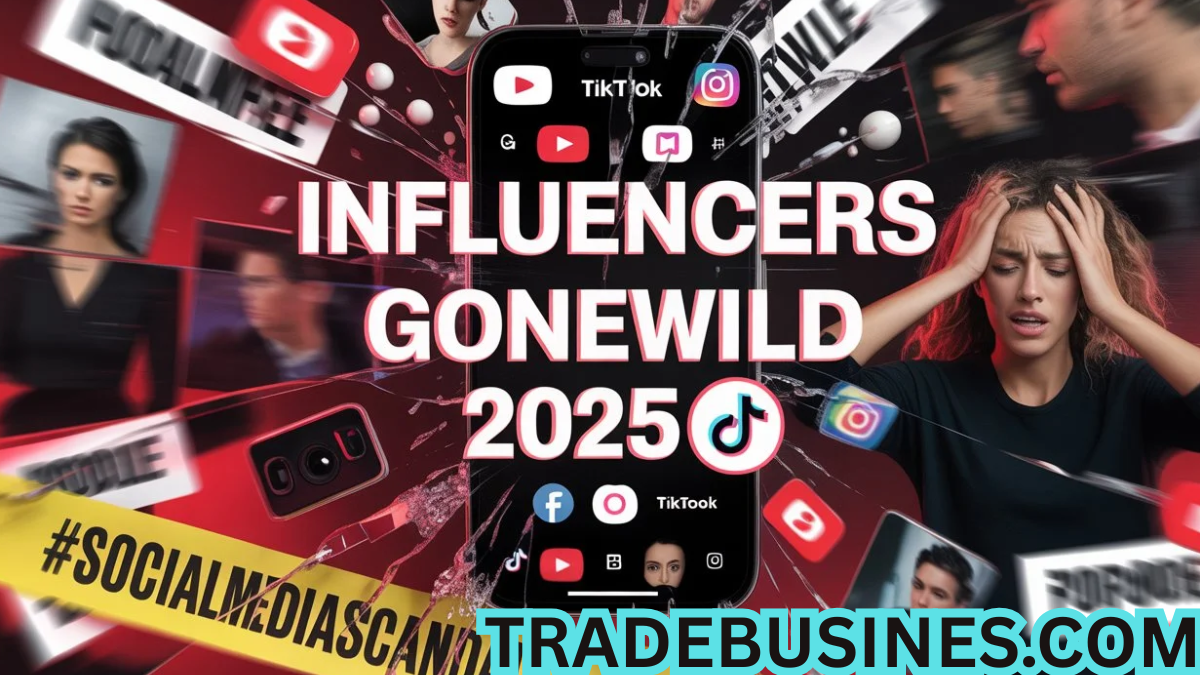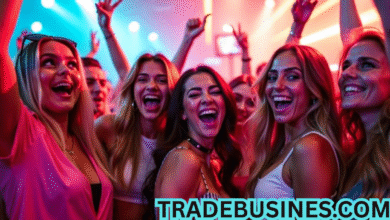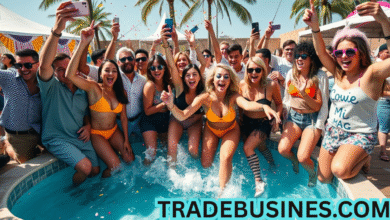The Rise of Influencer Culture
InfluencersGoneSild In the last decade, the internet has witnessed a monumental rise in individuals who built careers on social media platforms. These people, known as influencers, leveraged their personalities, aesthetics, and opinions to attract followers and monetize their content. Platforms like Instagram, TikTok, YouTube, and Twitter allowed everyday individuals to gain celebrity status by sharing curated moments of their lives. Influencer marketing quickly became a billion-dollar industry as brands recognized the power of peer-to-peer advertising. However, this rapid ascent has not been without controversy, leading to movements and hashtags like “InfluencersGoneSild.”
What is “InfluencersGoneSild”?
The term “InfluencersGoneSild” appears to be a satirical or critical expression that captures a perceived deviation from the original role of influencers. While the word “sild” may not exist in formal English, it could be a misspelling, play on words, or an invented term representing a shift, downfall, or transformation of influencer culture. The phrase suggests influencers have veered off course—becoming over-commercialized, disconnected, or perhaps engaging in behavior that contradicts the values they once stood for.
This concept has found resonance among internet users who feel fatigued or skeptical about influencer culture. It symbolizes a collective acknowledgment that the glamorous façade of influencer life might be cracking under the weight of excess, inauthenticity, or moral missteps.
The Problem of Over-Commercialization
One of the major criticisms reflected in “InfluencersGoneSild” is the excessive commercialization of personal spaces. Initially, influencers were admired for being authentic alternatives to celebrities. They were “just like us,” sharing makeup tutorials, vlogs, or fitness routines from their bedrooms. As sponsorships and collaborations flooded in, authenticity often took a back seat. Feed posts and stories turned into advertisements, and personal moments became marketing tools. The relationship between influencers and their audiences grew transactional, causing audiences to question the genuineness of endorsements.
Many critics argue that influencers have become walking billboards, promoting products regardless of personal belief or necessity. This has diluted trust and led to skepticism. Audiences are more aware now, often asking whether influencers use the products they endorse or are simply pushing for commission.
Moral and Ethical Missteps
The phrase “InfluencersGoneSild” could also reflect moral lapses among popular figures. Over the years, numerous influencers have faced backlash for culturally insensitive behavior, tone-deaf posts, or outright scandals involving racism, fraud, or exploitation. In some cases, influencers have taken lavish trips during humanitarian crises, promoted dubious health supplements, or flaunted wealth during economic downturns. Such behavior creates a disconnect between influencers and their audiences, particularly when followers are struggling with real-life challenges.
The backlash has taken the form of “cancel culture,” where influencers are publicly called out or shunned. While some cancelations may be justified, others are more complicated, revealing a fine line between accountability and cyberbullying. Nevertheless, the trend captured by “InfluencersGoneSild” indicates a growing awareness of the need for ethical conduct among public figures.
The Mental Health Toll on Influencers
Ironically, the very system that catapulted influencers into fame also contributes to their psychological struggles. The pressure to be constantly online, look flawless, and remain relevant can be exhausting. Many influencers have spoken publicly about burnout, anxiety, and the toll of negative comments. The carefully curated highlight reels do not reflect the reality behind the screen—hours of editing, fear of losing followers, and dependence on algorithm changes.
“InfluencersGoneSild” can also reflect how some influencers, in pursuit of digital success, lose touch with their personal values or well-being. The performative nature of their profession forces many to play characters instead of living genuine lives. As a result, some influencers fade away or pivot their careers entirely.
Changing Audience Expectations
Audiences have matured alongside the influencer industry. They no longer seek perfection, but realness. This shift is evident in the rise of micro-influencers, who prioritize niche content and personal engagement over follower counts. There is a growing appetite for creators who show vulnerability, make mistakes, and engage in social issues with sincerity. Viewers are more likely to support influencers who advocate for transparency and use their platforms for good.
The disillusionment encapsulated in “InfluencersGoneSild” may be an opportunity for the industry to reform. It signals that followers demand more than pretty pictures and product placements. They want substance, ethics, and value.
The Role of Algorithms and Virality
Social media algorithms play a crucial role in shaping influencer trajectories. They reward engagement, which often means controversy, clickbait, or polarizing opinions. As influencers chase likes, comments, and shares, they may engage in sensationalism or drama to stay visible. The problem is further compounded by virality culture, where being outrageous garners attention, regardless of merit.
This algorithmic trap contributes to the notion of influencers having “gone sild”—chasing attention at the expense of integrity. It is not just about content anymore; it is about who can generate the most buzz, no matter how shallow or provocative.
Impact on Society and Consumer Behavior
The phenomenon of influencers has deeply affected consumer behavior. From the way people shop to how they think about beauty, health, and success, influencer culture has set new norms. But as “InfluencersGoneSild” suggests, many are beginning to question those norms. For instance, idealized beauty standards promoted by influencers have sparked mental health concerns among young audiences. Similarly, impulsive purchases driven by influencer promotions have led to increased consumer debt and waste.
There’s a counterculture emerging that favors minimalism, authenticity, and mindful consumption. Critics of influencer culture often promote conscious following—advising users to unfollow accounts that make them feel inadequate or encourage harmful behaviors. The desire for transparency, social responsibility, and genuine connection is shaping a new digital landscape.
The Rise of the Anti-Influencer Movement
Movements like “InfluencersGoneSild” are not entirely cynical. They are part of a broader anti-influencer sentiment that seeks to redefine online influence. The “de-influencing” trend, for instance, encourages creators to share what not to buy or reject trends that are financially or ethically irresponsible. It is a rebellion against mindless consumerism and a call for more meaningful content.
Some influencers have rebranded themselves as educators, activists, or storytellers. They still hold influence but use it to raise awareness, inspire change, or build communities. This evolution may signify a more sustainable future for digital creators.
The Legal and Regulatory Framework
The influencer industry has grown so rapidly that regulatory frameworks are struggling to keep pace. Many countries have begun implementing laws requiring influencers to disclose paid partnerships, but enforcement is inconsistent. When influencers do not clearly label sponsored content, they mislead their audiences, and that raises ethical and legal concerns.
The demand for transparency is central to the “InfluencersGoneSild” discourse. It’s not about banning influencers but holding them to professional standards. The future might see stronger collaborations between influencers, brands, and regulators to ensure ethical compliance and consumer protection.
The Future of Influencing
Despite the backlash and criticism, influencing is unlikely to disappear. It will evolve. Influencers who adapt to changing expectations and embrace authenticity, ethics, and innovation will survive the tide. As new platforms emerge and digital behaviors shift, there will always be a space for creators who offer value, inspiration, or meaningful engagement.
The next generation of influencers may come from unexpected backgrounds, focusing less on aesthetics and more on knowledge, humor, or advocacy. Audiences are smarter, and they reward those who resonate with their values. The challenge is for influencers to resist the temptation of shortcuts and build long-term relationships with their followers.
Conclusion
“InfluencersGoneSild” is more than just a catchy phrase. It’s a cultural reflection of the changing dynamics between influencers and their audiences. It signifies disillusionment, but also hope for a more ethical and meaningful digital ecosystem. Whether it represents a fall from grace or a chance for reinvention depends on how both influencers and their audiences respond.
In the ever-evolving world of digital media, influence remains a powerful tool. But with great power comes responsibility. The story of influencers isn’t over—it’s just entering a new chapter where integrity, empathy, and realness take center stage.
Frequently Asked Questions (FAQs)
What does “InfluencersGoneSild” mean?
It’s a critical or satirical term that reflects the belief that influencers have lost touch with authenticity and purpose, becoming overly commercialized or morally compromised.
Is influencer culture declining?
Not necessarily declining, but evolving. While traditional influencer models are facing scrutiny, new forms of influence that emphasize value and authenticity are on the rise.
Why are people disillusioned with influencers?
People are disillusioned due to over-commercialization, lack of transparency, unethical behavior, and the pressures influencers create around beauty, wealth, and success.
What is de-influencing?
De-influencing is a trend where creators discourage InfluencersGoneSild unnecessary purchases or reject harmful consumer trends, promoting mindful consumption and authenticity.
Can influencers regain public trust?
Yes, by being transparent, ethical, and authentic. Influencers who prioritize their audience’s well-being and avoid exploitative practices are more likely to build lasting trust.



